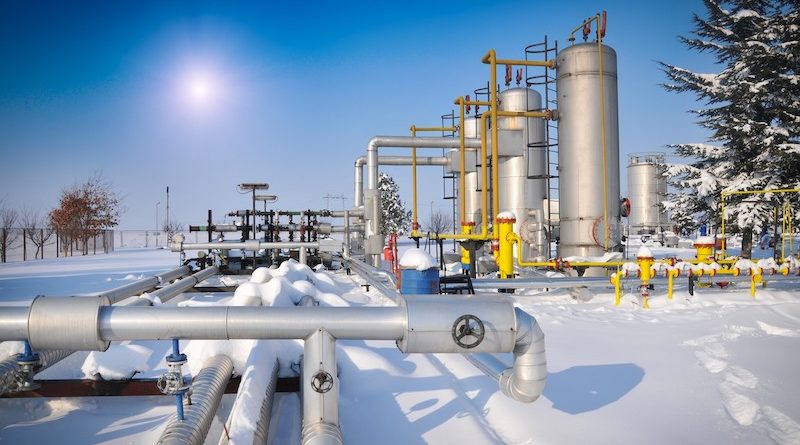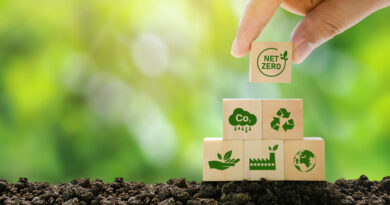
Methane emissions mitigation serving the security of gas supply
The European Union is facing the worst energy crisis since the 1970s. The spiking energy prices and worries about reliable supply fuelled by the invasion of Russia in Ukraine have revived discussions and calls to end the EU’s dependence on fossil fuel imports from Russia. Achieving the EU’s energy independence will require considerable effort and time. One of the immediate options is to increase the efforts to avoid methane emissions in the fossil fuels value chain.
The upcoming EU Methane Regulation will provide an essential regulatory tool both for limiting climate change and increasing the efficiency of the use of fossil fuels. As the EU isn’t a major producer of fossil fuels, we can’t expect a substantial contribution to the gas supply. Still, the increased efforts to capture and use methane emissions will serve in using methane emissions from agriculture and waste sectors. As methane is a highly potent greenhouse gas (GHG), the capture and use of methane emissions serve well to avoid climate crisis and strengthen the energy independence of Europe.
In mid-May 2022, the European Commission unveiled the REPowerEU strategic document enlisting measures to both drastically reduce EU dependence on Russian fossil energy supplies and accelerate the clean energy transition.
As one of the measures on gas specifically, the EU Commission has suggested over a tenfold increase in EU biomethane production, from the current ~3 billion cubic meters (bcm) to 35 bcm by 2030, doubling the biomethane production target suggested in the Fit for 55 Package, published last summer.
To this objective, the EU Commissions unveiled several measures in the REPowerEU Plan: to establish industrial biogas and biomethane partnership, encourage the establishment of energy communities, provide incentives for biogas upgrading into biomethane, promotion of infrastructure upgrading, R&D funding and facilitate access to finance via Connecting Europe Facility (CEF), Cohesion Policy, Recovery and Resilience Facility (RRF) and a Common Agricultural Policy.
Although higher gas prices could incentivise biomethane production in the short term, additional measures will be necessary to reach the 2030 target. To make biomethane more cost-competitive vis-à-vis natural gas in the longer term, the International Energy Agency (IEA) has suggested putting a value on methane emissions (which would otherwise be emitted from the decomposition of organic waste in the agriculture and waste sectors) avoided.
Some jurisdictions already allow such possibility, i.e. offsets generated by installing the anaerobic digesters can be used for compliance under the California-Québec Cap-and-Trade system.
This could be an interesting option for the EU to support the achievement of its Global Methane Pledge commitment to contribute to a 30% reduction by 2030 compared to 2020 levels across all man-made sources. Agriculture and waste are the major sources of methane emissions in the EU, accounting for almost 80% of total EU methane emissions. Moreover, boosting the biomethane production from agricultural wastes and residues would also help to reduce GHGs in the sectors, which for the time being, have not been at the forefront of the EU climate efforts. Methane constitutes a significant part of total GHG emissions in agriculture and waste, accounting for 54% and 88% respectively.
The EU circular economy strategy has already recognised an essential role of biomethane production via anaerobic digestion in reducing GHG emissions. Hence, the EU circular economy framework could help boost biomethane production by alleviating energy security concerns. But it requires better policy coordination in four focus areas: (a) the development of a measurement, reporting and verification system of methane emissions from the agriculture and waste sectors; (b) continual improvement of best practices to mitigate methane emissions, e.g. by introducing further requirements concerning landfill gas management; (c) production of biomethane from sustainable sources; and (d) responsible operation of biomethane plants minimising potential methane leaks.
The accelerated transition to the circular economy could help to address climate change threats and energy security concerns. Achievement of the European Green Deal will not be possible without reducing the methane emissions dominating GHGs in the agriculture and waste sectors.
Captured methane could also provide a clean source of EU-produced energy. While some regulatory steps were already made in the waste sector in the 1990s, in the agriculture sector, we are still at the beginning.
Globally, a step change could be achieved by putting activities and targets to mitigate methane emissions from all sectors under Nationally Determined Contributions (NDCs). This would provide a more focused and stable policy framework. At the regional/national level, regulatory framework incentives to promote biogas and biomethane production are needed because these low carbon fuels compete with fossil fuels. An increased carbon price or putting a value on abated methane could be helpful, but more efforts are needed to monitor the sustainability of biomethane value chains.

EU Commissioner for Energy

Florence School of Regulation



